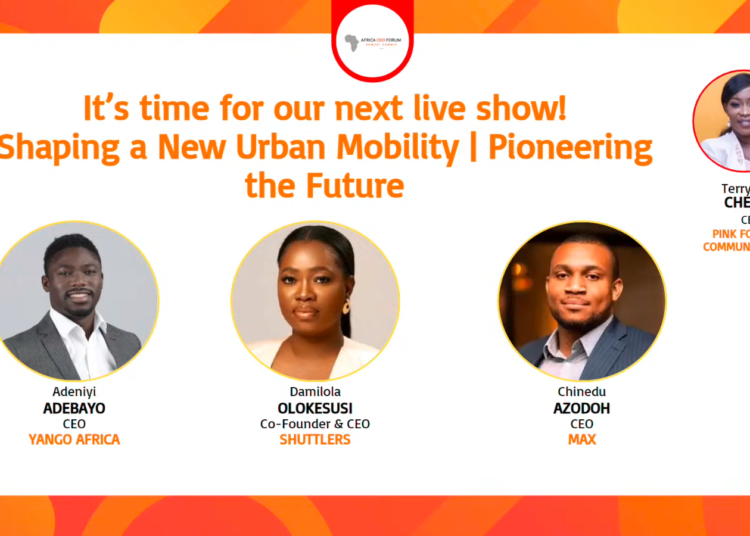“If you have the right dispatching technologies you can reduce the debt mileage that drivers accumulate when going around and trying to find a rider “. This was Adeniyi Adebayo CEO of Yango Africa’s response to the question on how technology can be used to drive affordability posed by by Terryanne Chebet on a session on urban mobility that she moderated in Africa CEO forum 2024.
“If you have the right dispatching technologies you can reduce the debt mileage that drivers accumulate when going around and trying to find a rider “
Adeniyi Adebayo CEO of Yango Africa
According to UN-HABITAT, Urban mobility refers to the various ways people, goods, and services move within urban areas. It encompasses all forms of transport including walking, cycling, public transit, and the spatial planning that supports these modes. The concept focuses on creating efficient, sustainable, and accessible transportation systems that enhance the quality of life in cities.
Over the years, companies have fast paced urban mobility by incorporating technology into ride sharing and fleet management systems. This has been realized through mobile payment systems to facilitate affordable access to public transport, utilizing data analytics to optimize route planning and reduce operational costs, and deploying renewable energy solutions to power vehicles.
A classic example, Uber and Bolt have been at the forefront in urban transportation by offering convenient, affordable, and reliable ride-hailing services. These platforms have not only improved accessibility but also created economic opportunities for drivers. Companies like Shuttlers in Nigeria have further disrupted the market by providing efficient, tech-driven shuttle services, easing the daily commute for urban dwellers. According to the National Center for Mobility Management, these startups have sparked substantial changes in urban mobility by reshaping commuting patterns and reducing traffic congestion.
Trends in Urban Mobility
Additionally, advancements in electric vehicles (EVs) and solar-powered transport have the potential to reduce operating expenses significantly over time, making sustainable mobility options more accessible and affordable. Companies like Zembo, which offers electric motorbikes for rent in Rwanda, are pioneering this space by providing low-cost, environmentally friendly transport solutions.
Moreover, digital payment systems such as M-Pesa in Kenya and mobile money across Africa have simplified transactions, making it easier for users to afford and access transportation services. These technologies have democratized access to mobility solutions, particularly in underserved areas where traditional banking infrastructure is lacking.
According to a study by the World Bank, the adoption of digital platforms and renewable energy solutions in urban transport could potentially reduce the cost of mobility by up to 40% in African cities by 2030 (“Sustainable Mobility for Africa,” World Bank, 2020). This statistic underscores the significant impact technology can have on affordability in the sector.
As technology continues to advance, opportunities in sustainable urban mobility in Africa are expanding. Innovations such as digital platforms, electric vehicles, and mobile payment systems are paving the way for more affordable and accessible transport solutions, benefiting both consumers and the environment.








